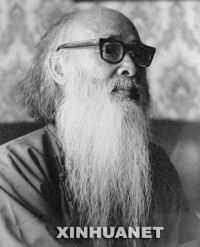Zhang Daqian
Zhang Daqian (张大千) was one of the most legendary and prestigious artists in 20th century China. A follower and developer of traditional Chinese arts, Zhang was a master in Chinese painting and highly skilled in calligraphy, seal cutting and classical poetry.
Zhang was born Zhang Zhengquan (张正权) to a scholar family in Neijiang, Sichuan Province, in 1899. His mother taught him painting and calligraphy when he was a child, and by the time he was 10, he was able to draw sophisticated flowers and portraits. During his childhood, he studied classics at a private school where his brother taught and traveled extensively. When he was 18, he went to Tokyo to study textile dyeing techniques. He then moved to Shanghai and began a successful career as a painter.
His career was briefly interrupted twice: once, when escaped to a reclusive life as a monk because of an unhappy marriage, and another time during the Anti-Japanese Aggression War when he was detained by the Japanese for being uncooperative. Following his release, Zhang returned to Sichuan, where he began to do more detailed paintings, rather than freehand brushwork. He began experimenting with Western coloring and shadowing skills, incorporating them into his Chinese-style paintings.
In 1949, Zhang began exhibiting his work around the world, including in Argentina, Brazil and the U.S. In 1953, his meeting with Pablo Picasso in Antibes "was viewed as a summit between the preeminent masters of Eastern and Western art," according to Wikipedia.
His "Aachensee Lake," created in 1968, was auctioned for 100.8 million yuan (US$15.5 million) in 2010, fetching one of the highest prices for Chinese paintings from the early and middle 20th century. The work, regarded as Zhang's best, had been in many exhibitions in New York, Boston and Chicago during the 1960s. In 2003, it was also displayed at the Metropolitan Museum of Art in New York for its exhibition "Between Two Cultures."
Zhang died in Taiwan in 1985. He was 85.
